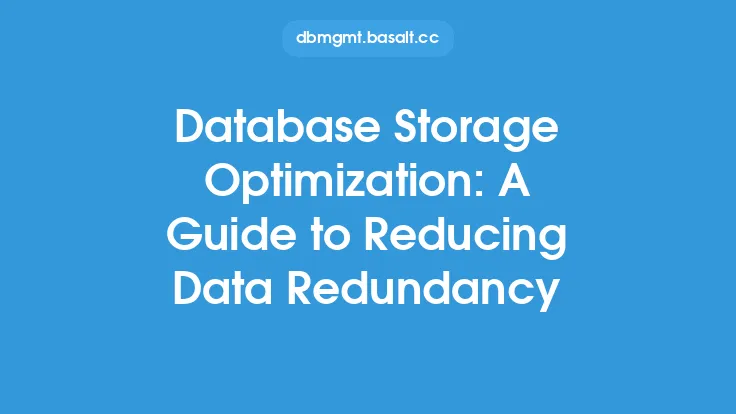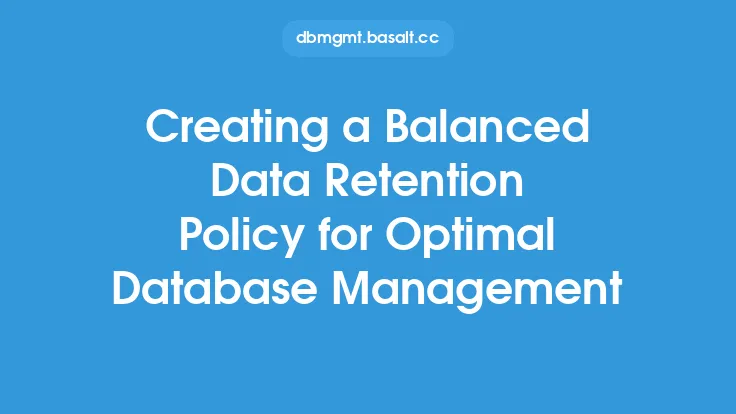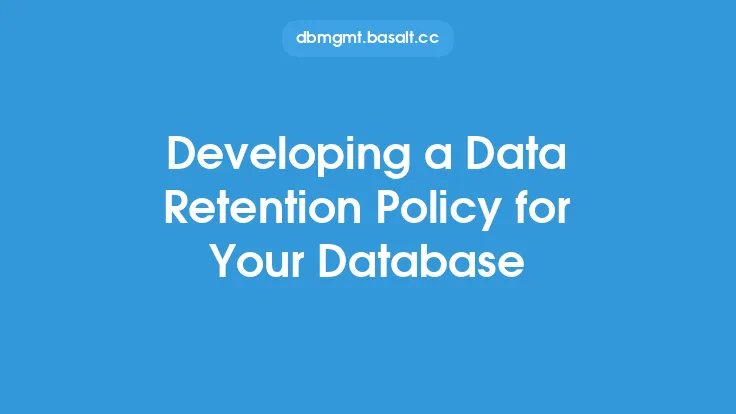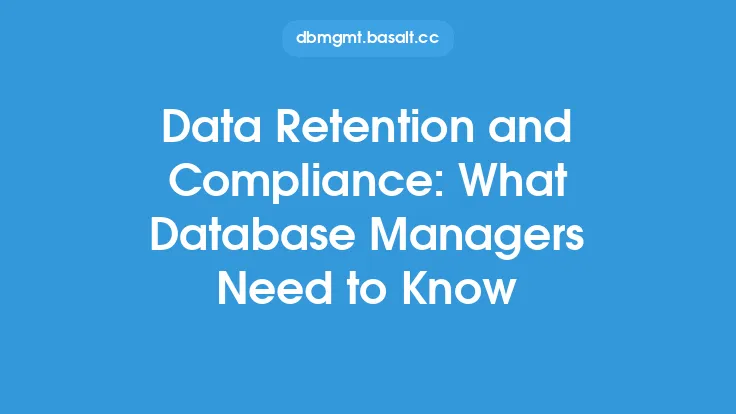Data retention policies are a crucial aspect of database management, as they help organizations manage their data effectively, ensure compliance with regulatory requirements, and optimize storage resources. A well-designed data retention policy outlines how long data should be kept, how it should be stored, and when it can be safely deleted. In this article, we will delve into the world of data retention policies, exploring their importance, key components, and best practices for implementation.
Introduction to Data Retention Policies
Data retention policies are designed to balance the need to retain data for business, legal, and regulatory purposes with the need to manage storage costs and minimize data-related risks. These policies typically apply to all types of data, including structured and unstructured data, and may vary depending on the organization, industry, and jurisdiction. A data retention policy should be tailored to the specific needs of the organization, taking into account factors such as data type, data value, and regulatory requirements.
Key Components of a Data Retention Policy
A comprehensive data retention policy should include several key components, including:
- Data classification: This involves categorizing data based on its sensitivity, importance, and regulatory requirements. Data classification helps determine how long data should be retained and how it should be stored.
- Retention periods: This specifies how long data should be kept, which may vary depending on the data type and regulatory requirements. Retention periods can range from a few months to several years or even indefinitely.
- Storage requirements: This outlines how data should be stored, including the type of storage media, data format, and access controls.
- Data disposal: This specifies how data should be disposed of when it is no longer needed, including methods for secure deletion and destruction.
- Compliance and regulatory requirements: This ensures that the data retention policy complies with relevant laws, regulations, and industry standards.
Benefits of Implementing a Data Retention Policy
Implementing a data retention policy can bring numerous benefits to an organization, including:
- Improved data management: A data retention policy helps organizations manage their data more effectively, reducing data sprawl and minimizing the risk of data loss.
- Regulatory compliance: A well-designed data retention policy ensures that an organization complies with relevant laws and regulations, reducing the risk of fines and penalties.
- Cost savings: By retaining only necessary data, organizations can reduce storage costs and minimize the need for expensive data recovery procedures.
- Enhanced data security: A data retention policy can help protect sensitive data by outlining access controls, encryption methods, and secure disposal procedures.
Best Practices for Implementing a Data Retention Policy
To implement a effective data retention policy, organizations should follow these best practices:
- Conduct a data inventory: Identify all types of data stored within the organization, including structured and unstructured data.
- Classify data: Categorize data based on its sensitivity, importance, and regulatory requirements.
- Establish retention periods: Determine how long data should be kept, based on business, legal, and regulatory requirements.
- Develop storage requirements: Outline how data should be stored, including the type of storage media, data format, and access controls.
- Train employees: Educate employees on the importance of data retention and their roles in implementing the policy.
- Monitor and review: Regularly monitor and review the data retention policy to ensure it remains effective and compliant with regulatory requirements.
Common Challenges in Implementing a Data Retention Policy
Implementing a data retention policy can be challenging, especially in large, complex organizations. Common challenges include:
- Data volume and complexity: Managing large volumes of data can be overwhelming, especially when dealing with multiple data types and formats.
- Regulatory requirements: Keeping up with changing regulatory requirements can be difficult, especially in industries with strict compliance standards.
- Employee buy-in: Educating employees on the importance of data retention and their roles in implementing the policy can be time-consuming and challenging.
- Technology and infrastructure: Implementing a data retention policy may require significant investments in technology and infrastructure, including storage systems and data management software.
Conclusion
In conclusion, data retention policies are a critical component of database management, helping organizations manage their data effectively, ensure compliance with regulatory requirements, and optimize storage resources. By understanding the key components of a data retention policy, including data classification, retention periods, storage requirements, and data disposal, organizations can develop a comprehensive policy that meets their specific needs. By following best practices and addressing common challenges, organizations can implement a effective data retention policy that supports their business objectives and ensures the long-term integrity and availability of their data.





